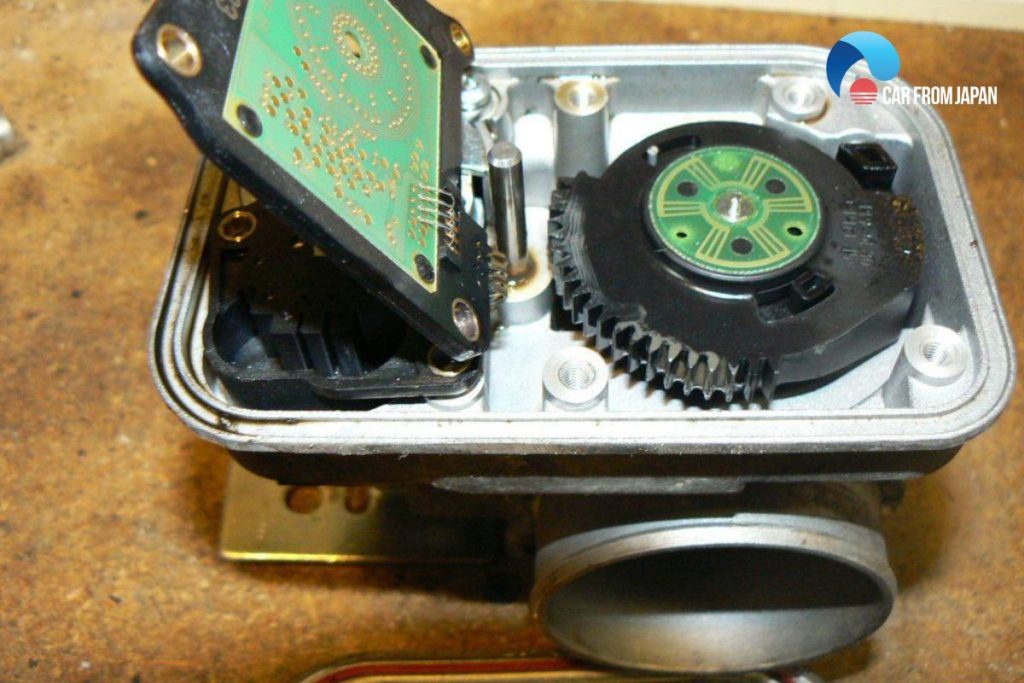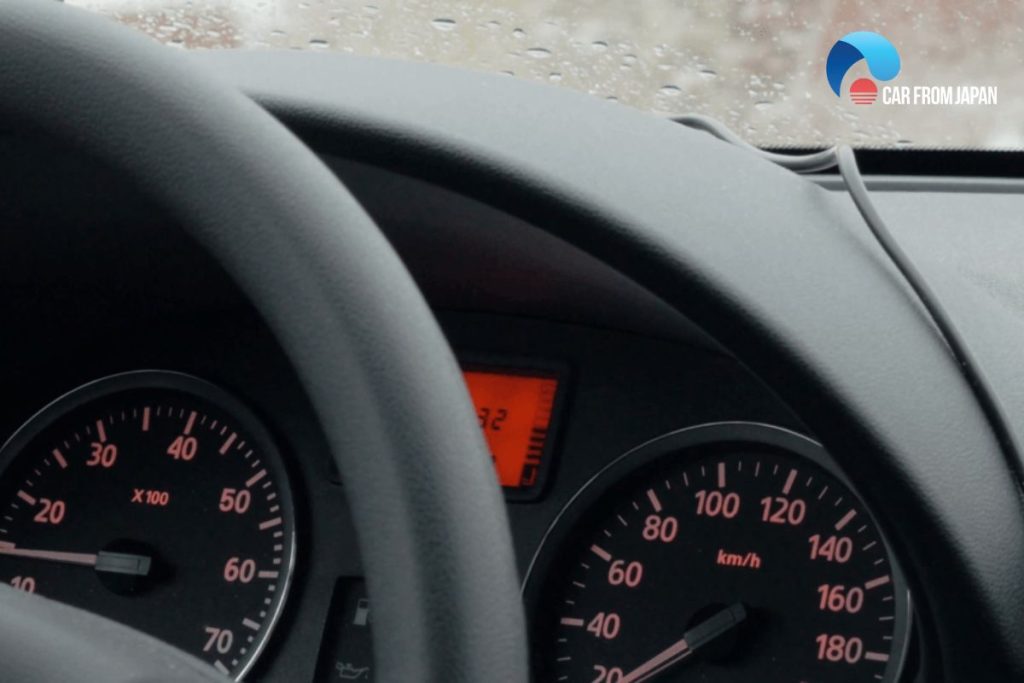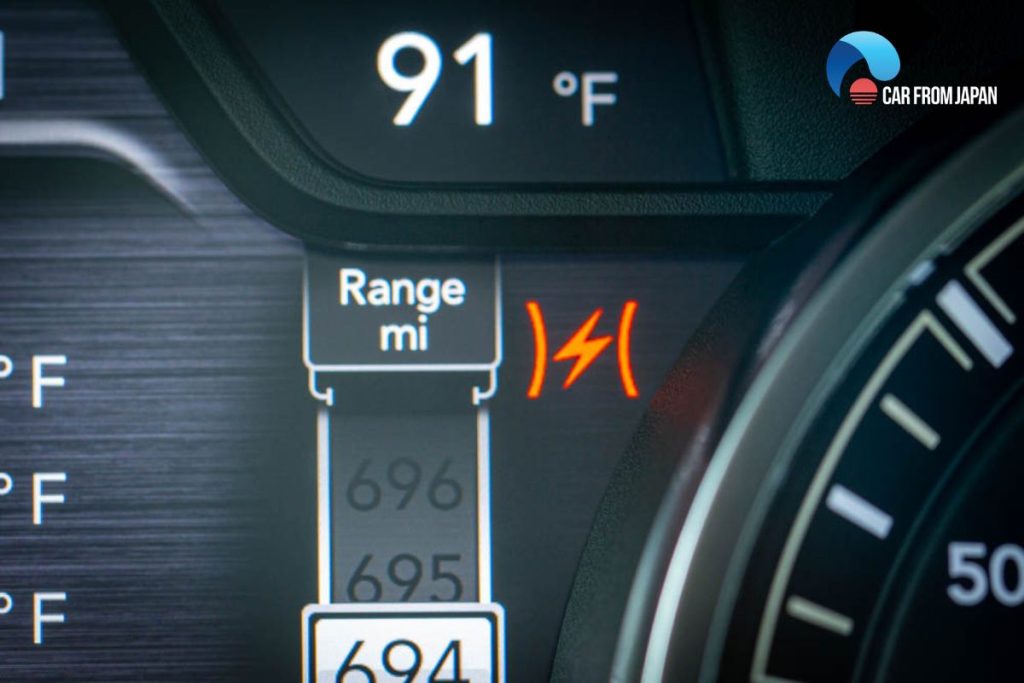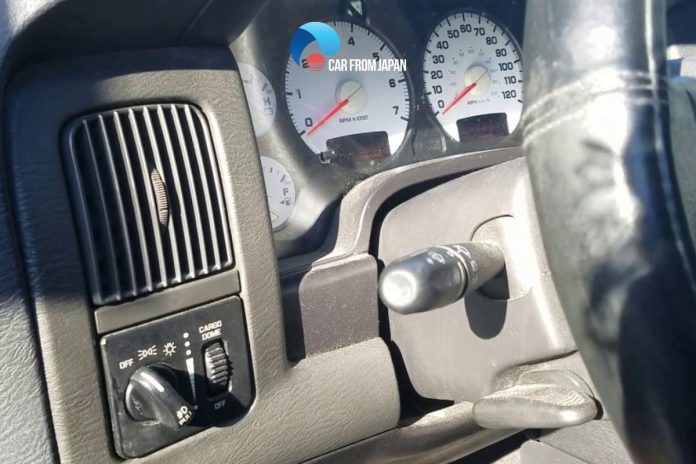Unless you are driving a car dated back to 1990 or older, it is likely to have an electronic throttle control (ETC). Most vehicles these days have dozens of computer-controlled electronic systems and electronic throttle control (ETC) is one of them.
The ETC acts as the connection between the gas pedal and the throttle. And the electronic throttle control light comes on if there is a problem with this system.
When you depress the throttle pedal, the ETC receives an electrical signal and sends command actions to control the throttle’s opening and closing. When this cycle is disrupted for some reason, the ETC light on the dashboard starts flashing.
Contents
- What Is Electronic Throttle Control Light?
- The Reasons For The Electronic Throttle Control Light To Come On
- Should I Drive When The Electronic Throttle Control Light Comes On?
- FAQs on Electronic Throttle Control Light Flash
- Does the ETC light always mean the throttle body is faulty?
- Why does the ETC light flash when I drive in rain or through puddles?
- What’s the connection between cruise control and the flashing ETC light?
- Why does my ETC light flash when I shift gears aggressively?
- Can a dirty ground connection affect the ETC system?
- Can driving with a flashing ETC light damage the engine?
- Final Words
What Is Electronic Throttle Control Light?
Maybe you don’t know that the main responsibility of the electronic throttle control is to control the throttle opening in the engine.
The ETC (electronic throttle control) light is an indicator that tells drivers when the throttle control system has any problem.
When the ETC light turns on the car dashboard, it means that one of the parts in the throttle control system is malfunctioning such as a bad throttle position sensor, a stuck throttle valve, or a problem with the wiring or connections in the system.
This can cause a variety of symptoms, such as reduced engine power, poor acceleration, and difficulty maintaining a consistent speed.
If the ETC light comes on while you’re driving, it’s important to have your car inspected by a qualified mechanic as soon as possible to diagnose the underlying issue and prevent potential safety hazards.
The Reasons For The Electronic Throttle Control Light To Come On
Each malfunction in the ETC system triggers an OBD-II error code stored in the engine control module (ECM).
A mechanic will use a digital scanner to pull out the codes and determine the source of the trouble. After that, it is all about taking the correct repair action.

Read More: The Meaning of the Dashboard Warning Lights
Still, knowing about the causes of a flashing electronic throttle control light will give you a head start over what repair work to expect.
Irregular throttle control operation
One of the most common electronic throttle control problems is the intermittent response from the throttle controller.
As you already know the ETC controls the throttle through an electric signal. The system cannot function when something disrupts the signal such as an issue with the relay control, a loose electrical wire, or a damaged sensor.
In any case, the throttle control will lose signals, causing it to work properly at some times and not at others. The problem will affect the car’s acceleration and may cause a total loss of control of the throttle pedal or the shutdown of the car.
You should stop driving when the vehicle does not accelerate upon the pressing of the throttle pedal. Tow it to a servicing center and have them diagnose the problem.
Throttle hesitation or stumbling
Damage in the throttle control is another occasion when the electronic throttle control warning light comes on.
It causes an erratic operation of the system that leads to hesitation or a stumbling effect in acceleration when you engage the throttle.
The acceleration problem can lead to major safety risks. The worst-case scenario is a stuck throttle that may lead to road accidents. So, take the car to the mechanic when it shows the symptoms.
A serious drop in mileage
A flashing electronic throttle control light can be connected to an abrupt change in the fuel economy. You may need to fill up the tank more than usual.
It happens due to a damaged throttle controller. The system controls the air-fuel mixture that goes into the engine. Wrong signals can mess the system up, making the engine burn more fuel than necessary.

Limited acceleration
A serious failure in the ETC system will also cause the electronic throttle control light on. The problem may cause the engine to go into limp mode.
When it happens, the car cannot accelerate beyond a fast idle. The ECM limits the speed to save the engine from further damage.
Damaged accelerator pedal position sensor
The accelerator pedal position sensor is responsible for detecting the position of the accelerator pedal and transmitting this information to the engine control module. If this sensor is faulty, it can cause the ETC light to come on.
Wiring problem
Wiring issues can occur in any part of the ETC system, including the throttle body, accelerator pedal position sensor, and engine control module. If there is a problem with the wiring, it can cause the ETC light to come on.
Failed engine control module
The engine control module is responsible for controlling the ETC system. If the engine control module fails, it can cause the ETC light to come on.

Should I Drive When The Electronic Throttle Control Light Comes On?
Of course, it’s not recommended for driving when any warning lights are on the car dashboard including the electronic throttle light especially when this light is flashing.
It’s a warning sign to tell that there’s a problem happening to the ETC system and it can directly affect the throttle response and the engine performance.
So our advice is: If the ETC light is on, you should take your vehicle to a qualified mechanic as soon as possible to diagnose and repair the issue.
Continuing to drive with a faulty ETC system can lead to further damage to your vehicle and can be a safety hazard as well.
In some cases, the ETC system may go into a “limp mode” when there is a problem, which means that the engine power may be reduced to prevent further damage.
If this happens, you may still be able to drive your vehicle to a safe location or to a repair shop, but you should do so cautiously and at a reduced speed.
In any case, it is best to have your vehicle inspected by a qualified mechanic as soon as possible when the ETC light comes on to ensure your safety and prevent further damage to your vehicle.
FAQs on Electronic Throttle Control Light Flash
Does the ETC light always mean the throttle body is faulty?
Not necessarily. While a dirty or failing throttle body is a common cause, the issue could also stem from wiring problems, bad sensors (like the accelerator pedal sensor), or even the engine control module (ECM).
Why does the ETC light flash when I drive in rain or through puddles?
Water intrusion into the throttle body’s wiring harness or sensors can cause short circuits or erratic signals, making the ETC light flash intermittently in wet conditions.
What’s the connection between cruise control and the flashing ETC light?
Since both systems rely on throttle control, a malfunction in cruise control wiring or components can interfere with the throttle actuator and trigger the ETC warning.
Why does my ETC light flash when I shift gears aggressively?
Sudden gear changes or jerky clutch engagement (especially in manual cars) can briefly upset throttle synchronization, triggering the ETC light in vehicles with sensitive systems.
Can a dirty ground connection affect the ETC system?
Absolutely. Poor grounding can cause voltage inconsistencies that affect how the throttle actuator communicates with the ECM, sometimes leading to false ETC alerts.
Can driving with a flashing ETC light damage the engine?
In some cases, yes.
If the throttle system fails to regulate airflow properly, it could cause unstable RPMs, poor fuel mixture, or even limp mode, potentially leading to long-term damage if ignored.
Understanding how to fix when the electronic throttle control light flashes in this video from Perpetual Projects!
Final Words
A flashing Electronic Throttle Control light is a serious warning that you shouldn’t ignore. This light signals a potential problem with a critical system that manages your vehicle’s acceleration.
Do not continue driving to avoid further damage. Prompt diagnosis to identify the root cause, whether it’s a faulty sensor, wiring issue, or a problem with the throttle body itself!




I like the topic from the blogger (Tsukasa Azuma) how can I get in touch with him?